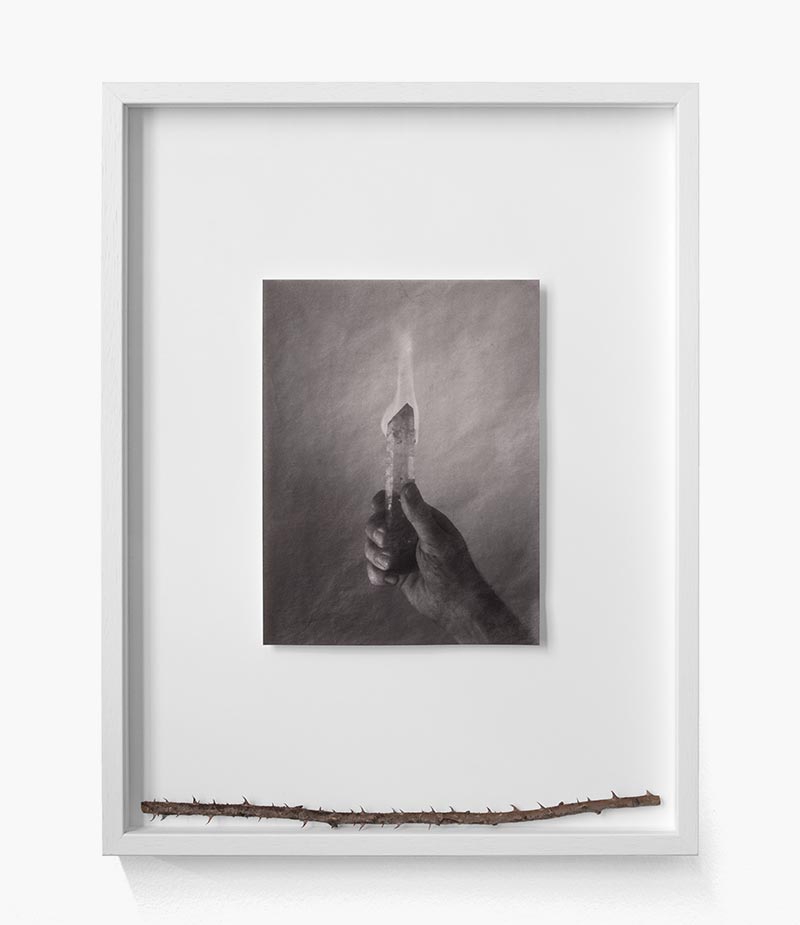What then is love but mourning?
What desire, but a selfe-burning?
Till shee that hates doth love returne,
Thus will I mourne, thus will I sing,
Come away, come away, my darling.
Thomas Campion, What then is love but mourning?
-
Oh, who can hold a fire in his hand / By thinking on the frosty Caucasus?
Shakespeare, Richard II
-
Tomorrow I will write you again, in our foreign language. I won’t remember a word of it and in September, without my having seen it again, you will burn, you will burn it, it has to be you.
Derrida, Cinders
-

The photograph of a hand holding a flaming crystal, framed alongside thorns. The crystal is in the process of self-combustion: “What is desire but a self-burning?” asked the English poet Thomas Campion in the song
What is love but mourning? (1601). The bramble recalls the sometimes thorny nature of our experience of reality.
 Albumen print, bramble, frame
Albumen print, bramble, frame
40 x 30 cm
Single print
Qui pourra tenir le feu dans sa main en pensant aux glaces du Caucase ?
Shakespeare, Richard II
-
Demain je t’écrirai encore, dans notre langue étrangère. Je n’en retiendrai pas un mot et en septembre, sans que je l’aie même revue, tu brûleras, tu la brûleras, toi, faut que ce soit toi.
Derrida, Cendres
-

La photographie d’une main tenant un cristal enflammé; dans le cadre, une ronce l’accompagne.Employé comme symbole du désir amoureux (d’après le concept de cristallisation inventé par Stendhal) le cristal est ici en auto-combustion: «What (is) desire, but a self-burning?» interrogeait en écho le poète anglais Thomas Campion en 1601 dans la chanson What is love but mourning?. La ronce évoque quant à elle le rapport à la réalité, parfois épineuse.

Tirage à l'albumine, ronce, encadrement
40 x 30 cm
Pièce unique




